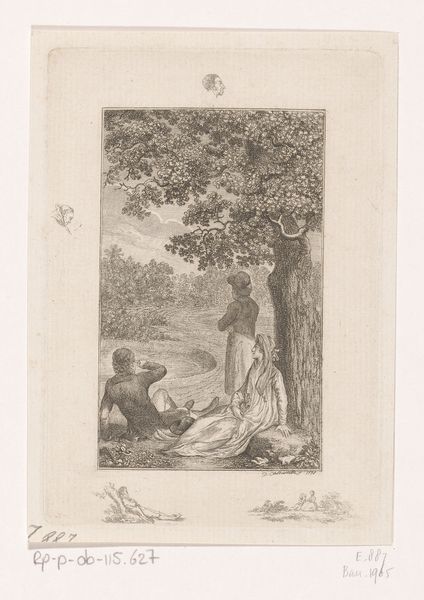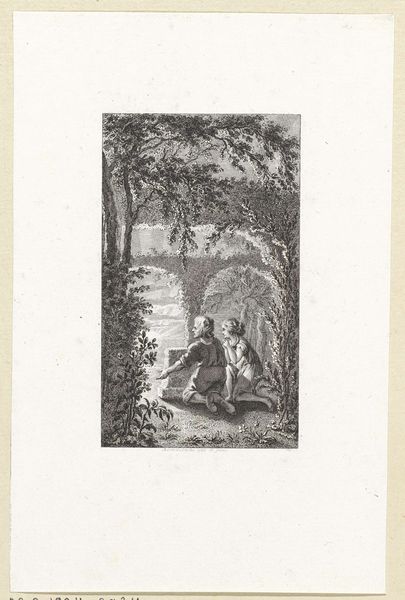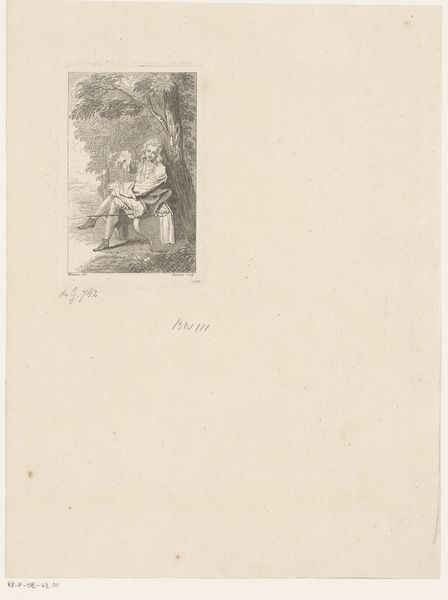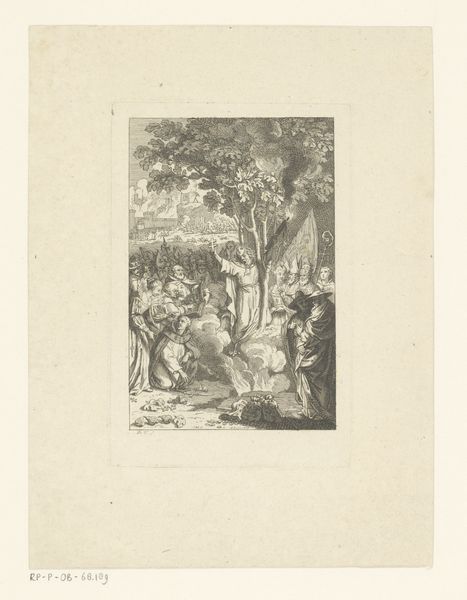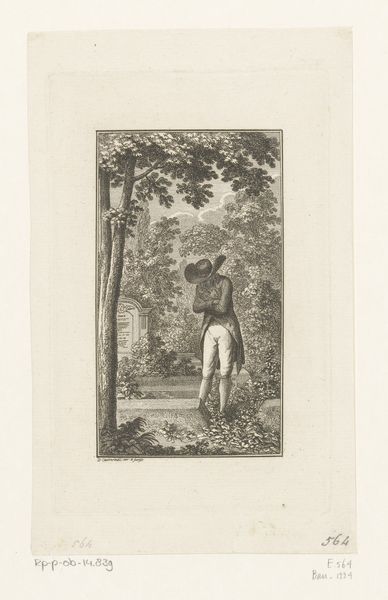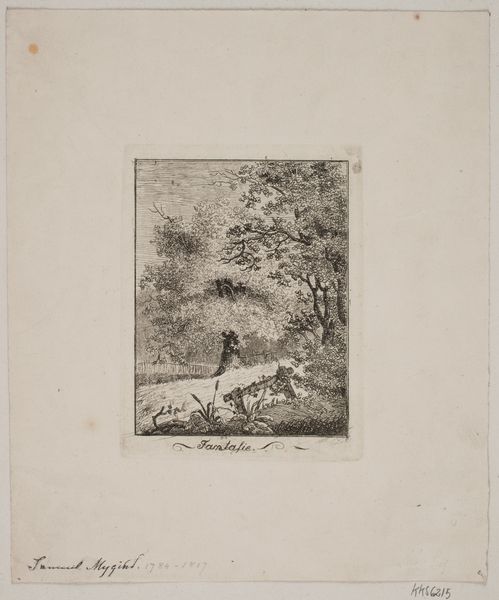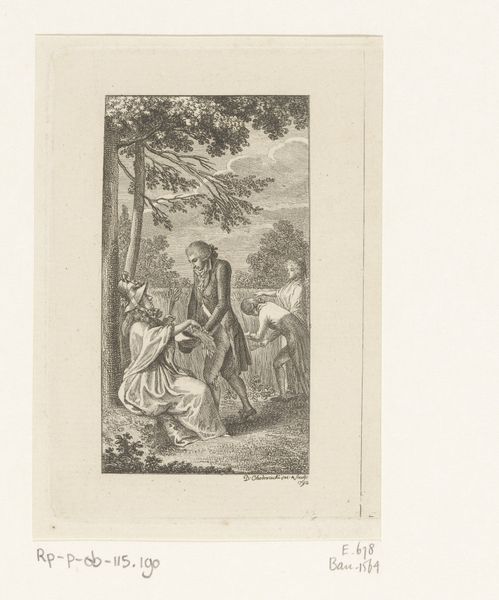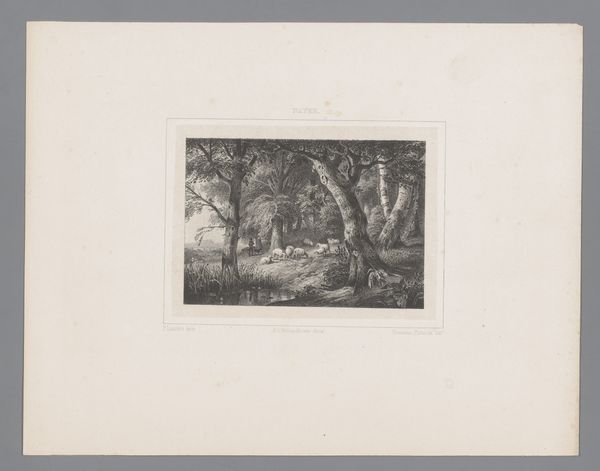
Twee mannen in een tuin, een op zijn knieën met een dood vogeltje in de hand 1755 - 1779
0:00
0:00
carlleberechtcrusius
Rijksmuseum
Dimensions: height 140 mm, width 96 mm
Copyright: Rijks Museum: Open Domain
Editor: This drawing, "Twee mannen in een tuin, een op zijn knieën met een dood vogeltje in de hand" from the late 18th century by Carl Leberecht Crusius, portrays two men in a garden, with one kneeling and holding a dead bird. The scene is quite poignant; what do you see in this piece? Curator: It's interesting how this genre scene engages with ideas of mortality and social dynamics within the context of the late 18th century. The deceased bird prompts us to reflect on the fleeting nature of life, and its impact on the emotions of these two men, and arguably, their relationship. Who are these men? Their positions in society shape their expression of grief, don't you think? Editor: That’s a compelling point. One man is standing and appears older, the other is kneeling. Do you think their different stances are symbolic? Curator: Precisely! The standing man’s relative privilege allows for a certain emotional distance, reflected in his upright posture. The kneeling man, perhaps of lower social standing, is literally and figuratively closer to death. Think about how artistic representations of mourning can subtly enforce societal hierarchies, reflecting who is granted the space to grieve, and how. How does this image make you feel about the men depicted and about their social strata? Editor: It does make me wonder about those who are often excluded from such gentle scenes of grief, those who don't get acknowledged by art... Thank you. It’s really changed how I see the image. Curator: It makes you consider not only who *is* visible, but who isn't, and *why*. Always a useful reflection when you encounter such images! I found this exchange illuminating as well.
Comments
No comments
Be the first to comment and join the conversation on the ultimate creative platform.

